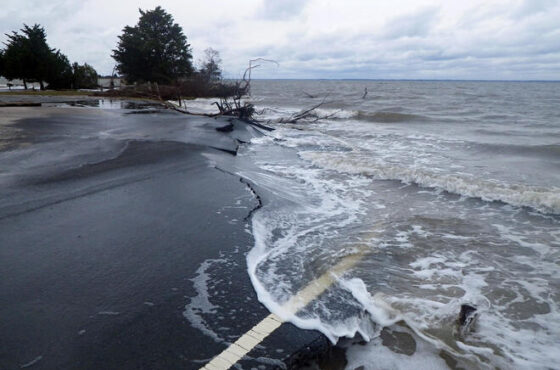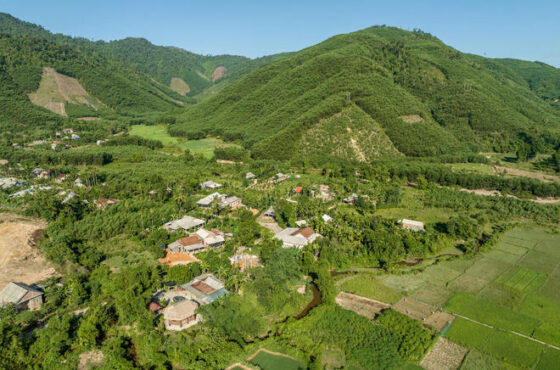Conflicts of Interest Swamp the Department of Interior
Published by the Natural Resources Defense Fund

U.S. Department of the Interior Secretary Ryan Zinke swears in David Bernhardt as the agency’s deputy secretary in August.
U.S. Department of the Interior/Flickr
One of the ways that our commander in chief got elected was by pledging to “drain the swamp” of Washington, D.C. The promise conjured images of special interests being suctioned out of the corridors of power, sluicing down the National Mall into the Tidal Basin and ultimately out to sea.
This promise has been not just broken but shattered. Look no further than the halls of the U.S. Department of the Interior, where 13 former lobbyists for the oil and gas industry are now employed. A partial tally of these newly minted officials, published by the Center for Investigative Reporting, suggests a Cabinet-level department that is heading in the wrong direction.
The list of ex-lobbyists now occupying key positions at Interior includes Deputy Secretary David Bernhardt, the department’s second in command, whose conflicts of interest are so many and so pronounced that more than 150 environmental groups, including NRDC, cosigned a letter to U.S. senators last May urging them to reject his nomination. (Bernhardt was ultimately approved by the Senate, 53–43.) One assistant secretary, Doug Domenech, had parlayed his lobbying experience into a job as director of the Fueling Freedom Project, designed—in its organizers’ own words—“to combat the Environmental Protection Agency’s proposed Clean Power Plan, which represents a federal takeover of the entire U.S. system of electric generation.” Another assistant secretary, Scott Cameron, rejoined the department (like Domenech, he had worked at Interior during the George W. Bush administration) after representing both Shell Oil and the Marcellus Shale Coalition as a lobbyist.
Following these three are many others whose curricula vitae have been documented by the Center for Investigative Reporting and by the Western Values Project, which has been keeping a running tab of lobbyists-turned-officials on its impressive Department of Influence website. Taken together, these appointments reveal an Interior Department where expertise in areas like land use and natural resources management is relevant only when coupled with extensive—and friendly—industry contacts.
And why would that matter to Zinke and Trump? Because as glaringly different as their backstories are, the Interior secretary, a Montana-bred outdoorsman, and his boss, a Manhattan-dwelling real estate tycoon, have one thing in common: They both want to make it much easier for fossil fuel companies to expand their operations on federal property. Zinke has already ordered his department to fast-track requests for new drilling permits, setting a limit of 30 days—down from the previous average of 257 days. He has also ordered significant and damaging changes to the environmental review process that drillers hate. And he has reopened a loophole—closed by President Obama—that will once again allow energy companies to avoid paying royalties on fuels extracted from public lands.
Reports of dysfunction in other Cabinet-level departments—State, Education, Energy, HUD, take your pick—are frightening because they suggest that these agencies’ respective leaders are in over their heads and have lost the ability to manage their teams (assuming they ever had that ability). At the Department of the Interior, by contrast, the fear is that Zinke and his swampy staff of ex-lobbyists know exactly what they’re doing.
onEarth provides reporting and analysis about environmental science, policy, and culture. All opinions expressed are those of the authors and do not necessarily reflect the policies or positions of NRDC. Learn more or follow us on Facebook and Twitter.
Related Stories
Read the full article at: https://www.nrdc.org/onearth/conflicts-interest-swamp-department-interior




